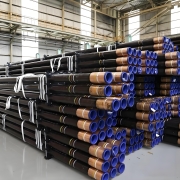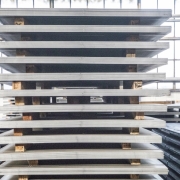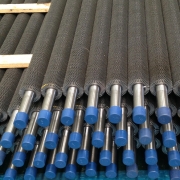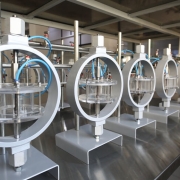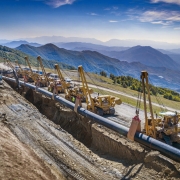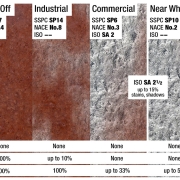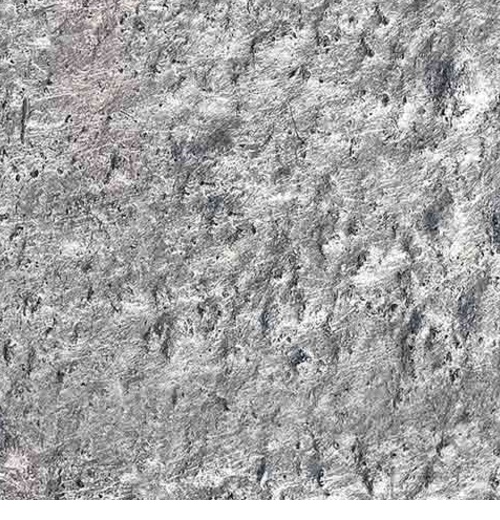9Cr, 13Cr, Super 13Cr, 22Cr, and 25Cr in Casing and Tubing
Introduction
In the oil and gas industry, selecting materials for casing and tubing is crucial for ensuring the integrity, safety, and efficiency of sound operations. The choice of material is critical in environments where corrosion poses a significant threat. This blog will delve into the specifics of several corrosion-resistant alloys (CRAs) commonly used in oil casing and tubing: API 5CT L80-9Cr, API 5CT L80-9Cr, 13Cr, Super 13Cr, 22Cr, and 25Cr. We’ll explore their properties, applications, and factors when selecting the appropriate material for your well.
Understanding the Challenge: Corrosion in Oil and Gas Wells
Corrosion is a pervasive issue in the oil and gas industry, especially in wells with corrosive gases such as CO₂ and H₂S. These gases, often combined with high levels of chlorides, can lead to various forms of corrosion, including:
Uniform Corrosion: A general loss of metal thickness.
Pitting and Crevice Corrosion: Localized forms of corrosion that create deep pits or crevices, potentially leading to rapid failure.
Sulfide Stress Cracking (SSC) and Hydrogen-Induced Cracking (HIC): Caused by H₂S, these are critical forms of corrosion that can lead to catastrophic failures if not properly managed.
To combat these challenges, the industry has developed a range of CRAs, each with specific properties tailored to different environments. Below, we’ll examine some of the most commonly used CRAs.
API 5CT L80-9Cr: The Cost-Effective Solution for Moderate CO₂ Environments
API 5CT L80-9Cr is a martensitic stainless steel alloy with 9% chromium content. It is primarily used in wells where CO₂ corrosion is a concern, but H₂S levels are low to moderate.
Key Properties:
Corrosion Resistance: Provides good resistance to CO₂ corrosion but is less effective in environments with high H₂S content.
Mechanical Strength: Offers a good balance between corrosion resistance and mechanical strength, making it suitable for moderate depths and pressures.
Cost-Effective: A more economical option than higher-grade alloys, making it a popular choice for wells where corrosion conditions are not overly severe.
Applications:
Wells with moderate CO₂ levels.
Environments where H₂S content is low, or SSC is not a primary concern.
API 5CT L80-13Cr: The Industry Standard for Sweet Wells
API 5CT L80-13Cr is widely used in the oil and gas industry, particularly for “sweet” wells with high CO₂ content but low H₂S. With 13% chromium, this alloy offers enhanced corrosion resistance compared to 9Cr, making it suitable for a broader range of environments.
Key Properties:
Corrosion Resistance: Excellent resistance to CO₂ corrosion and moderate resistance to chlorides. They limited sour service capability.
Weldability: Requires careful control during welding to avoid the formation of brittle phases.
Mechanical Properties: Similar to 9Cr but with improved corrosion resistance, allowing for use in more aggressive environments.
Applications:
Sweet wells with high CO₂ and low H₂S content.
In environments with moderate chloride levels, pitting and crevice corrosion may be a concern.
Super 13Cr: Enhanced Resistance for More Aggressive Conditions
Super 13Cr is an advanced version of 13Cr stainless steel designed to offer superior corrosion resistance in more challenging environments. With improved resistance to chlorides and H₂S, it is suitable for wells that present a more aggressive corrosion profile.
Key Properties:
Enhanced Corrosion Resistance: Better performance in environments with higher chloride levels and moderate H₂S.
Toughness: Improved toughness over standard 13Cr, making it suitable for more extreme conditions.
Versatility: This can be used in sweet and mildly sour environments, offering flexibility in material selection.
Applications:
Wells with moderate to high CO₂ and H₂S levels.
Environments where the risk of pitting and crevice corrosion is elevated.
22Cr: The Duplex Solution for Sour and Chloride-Rich Environments
22Cr is duplex stainless steel containing 22% chromium, offering a balanced strength and corrosion resistance combination. Its duplex microstructure (a mix of austenitic and ferritic phases) gives it superior resistance to pitting, crevice corrosion, and SSC.
Key Properties:
High Strength: The duplex structure provides higher mechanical strength, allowing for thinner walls and lighter components.
Excellent Corrosion Resistance: Suitable for environments with high chloride content and moderate sour service (H₂S).
Cost-Effective: While more expensive than 13Cr, 22Cr offers a good balance of performance and cost, making it a popular choice for many offshore and deepwater applications.
Applications:
Sour wells with high chloride content.
Offshore and deepwater wells where mechanical strength and corrosion resistance are critical.
25Cr: The Super Duplex Stainless Steel for the Most Demanding Applications
25Cr, a super duplex stainless steel with 25% chromium, is the go-to material for the most demanding oil and gas environments. It offers unparalleled corrosion resistance, particularly in high-chloride and sour service conditions, making it ideal for deepwater and high-pressure/high-temperature (HPHT) wells.
Key Properties:
Superior Corrosion Resistance: Outstanding resistance to pitting, crevice corrosion, and stress corrosion cracking in aggressive environments.
High Mechanical Strength: The super duplex structure allows for thinner, lighter components without sacrificing strength.
Reliability: Provides a high level of reliability in extreme environments, reducing the risk of failure and associated downtime.
Applications:
Ultra-deepwater wells with high CO₂, H₂S, and chloride levels.
HPHT wells where both corrosion resistance and mechanical strength are critical.
Selecting the Right Alloy: A Practical Guide
Choosing the suitable alloy for casing and tubing depends on thoroughly understanding the healthy environment and operational conditions. Here’s a practical guide to help you make an informed decision:
Evaluate the Corrosive Environment: Assess CO₂, H₂S, and chloride levels. This will help determine the necessary corrosion resistance.
Consider Mechanical Requirements: Determine the depth, pressure, and temperature of the well to understand the material’s mechanical demands.
Balance Cost and Performance: Higher-grade alloys offer better performance but also come at a higher cost. Balance the material’s performance with the project’s budget.
Long-Term Reliability: Consider each material’s long-term reliability and maintenance costs. Higher upfront costs may be justified by reduced maintenance and longer service life.
Consult Standards and Guidelines: Adhere to industry standards such as NACE MR0175/ISO 15156 for sour service to ensure compliance and safety.
Conclusion
In the oil and gas industry, selecting casing and tubing materials is a critical decision that impacts the safety, efficiency, and profitability of oil-healthy operations. API 5CT L80-9Cr, API 5CT L80-13Cr, Super 13Cr, 22Cr, and 25Cr each offer unique properties tailored to different corrosive environments and operational conditions. By carefully assessing your well’s needs and following the guidelines outlined above, you can choose the alloy that provides the best balance of corrosion resistance, mechanical strength, and cost-effectiveness.
Ensuring the correct material selection enhances your operations’ safety and reliability and contributes to your wells’ overall success and longevity.

